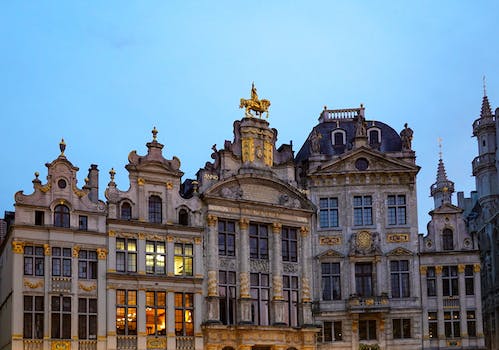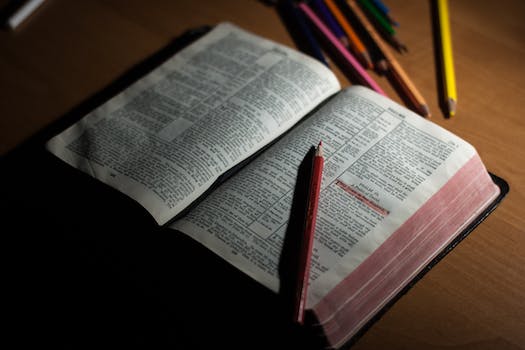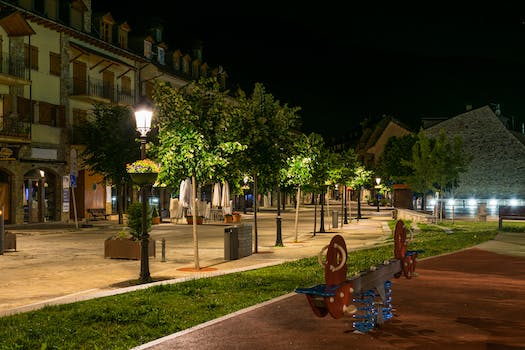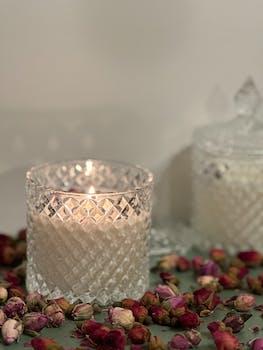

-
Table of Contents
Baroque or Broke? Embrace the opulence or embrace the savings.
Introduction
Baroque is a style of art, architecture, and music that emerged in Europe in the 17th century. It is characterized by ornate and extravagant details, dramatic compositions, and a sense of grandeur. The Baroque period is known for its opulence and complexity, with artists and architects seeking to create awe-inspiring works that reflected the power and wealth of the Catholic Church and European monarchies. This artistic style had a significant impact on various fields, leaving a lasting legacy in the history of art and culture.
The Influence of Baroque Art on Modern Design
The Influence of Baroque Art on Modern Design
Baroque art, which emerged in Europe in the 17th century, has had a profound impact on modern design. Its ornate and extravagant style has influenced various aspects of contemporary design, including architecture, interior design, fashion, and even graphic design. The baroque movement, characterized by its grandeur and opulence, continues to inspire designers today, creating a fusion of the past and the present.
One of the most significant ways in which baroque art has influenced modern design is through architecture. Baroque architecture is known for its elaborate ornamentation, dramatic forms, and intricate details. These characteristics can be seen in many modern buildings, where architects incorporate baroque elements to create a sense of grandeur and luxury. The use of curved lines, domes, and decorative motifs reminiscent of the baroque period can be found in contemporary structures, giving them a timeless and elegant appeal.
Interior design has also been greatly influenced by baroque art. The baroque style is characterized by its lavishness and abundance of decorative elements. This aesthetic has been translated into modern interior design, where designers use ornate furniture, rich fabrics, and intricate patterns to create luxurious and opulent spaces. The use of gold accents, elaborate chandeliers, and intricate moldings are all nods to the baroque period, creating a sense of grandeur and sophistication in modern interiors.
Fashion is another area where the influence of baroque art can be seen. The baroque style is characterized by its elaborate and detailed designs, often featuring intricate embroidery, lace, and embellishments. These elements have been incorporated into modern fashion, with designers using ornate fabrics, intricate patterns, and decorative details to create luxurious and glamorous garments. The baroque influence can be seen in evening gowns, wedding dresses, and even casual wear, adding a touch of elegance and sophistication to modern fashion.
Graphic design has also been influenced by baroque art. The baroque style is characterized by its use of elaborate ornamentation, intricate details, and dramatic compositions. These elements have been incorporated into modern graphic design, where designers use ornate typography, intricate patterns, and decorative motifs to create visually striking designs. The baroque influence can be seen in advertisements, packaging, and even website designs, adding a sense of drama and opulence to modern visual communication.
In conclusion, the influence of baroque art on modern design is undeniable. Its ornate and extravagant style has left a lasting impact on various aspects of contemporary design, including architecture, interior design, fashion, and graphic design. The fusion of the past and the present, created by incorporating baroque elements into modern design, has resulted in a sense of grandeur, luxury, and sophistication. Whether it is the use of elaborate ornamentation in architecture, opulent fabrics in fashion, or intricate patterns in graphic design, the baroque influence continues to shape and inspire modern design, proving that baroque is definitely not "broke."
Understanding the Economic Impact of Being Broke

Baroque or Broke?
Understanding the Economic Impact of Being Broke
In today's society, financial stability is a crucial aspect of our lives. However, not everyone is fortunate enough to enjoy this stability. Many individuals find themselves in a state of being broke, which can have a significant economic impact on their lives. In this article, we will explore the various ways in which being broke can affect individuals and society as a whole.
One of the most immediate consequences of being broke is the inability to meet basic needs. When individuals lack the financial resources to afford food, shelter, and clothing, their quality of life is severely compromised. This can lead to a downward spiral of poverty, as individuals struggle to break free from the cycle of being broke. Without access to these basic necessities, individuals may find it challenging to maintain their physical and mental well-being, which can further exacerbate their financial situation.
Furthermore, being broke often means limited access to education and healthcare. Education is a fundamental tool for social mobility, allowing individuals to acquire the skills and knowledge necessary to secure better job opportunities. However, without the financial means to afford education, individuals may find themselves trapped in low-paying jobs with limited prospects for advancement. Similarly, the lack of financial resources can hinder access to healthcare, leaving individuals vulnerable to health issues that can further drain their finances.
Being broke also has a significant impact on mental health. Financial stress and uncertainty can lead to anxiety, depression, and other mental health disorders. The constant worry about making ends meet and the fear of falling deeper into debt can take a toll on individuals' emotional well-being. Moreover, the stigma associated with being broke can further exacerbate these mental health issues, as individuals may feel ashamed or embarrassed about their financial situation.
The economic impact of being broke extends beyond the individual level and affects society as a whole. When a significant portion of the population is broke, it can lead to increased social inequality. The gap between the rich and the poor widens, creating a divided society where opportunities for upward mobility are limited. This can result in social unrest and a breakdown of social cohesion, as individuals become disillusioned with the system that perpetuates their financial struggles.
Additionally, being broke can have long-term consequences for the economy. When individuals lack the financial means to invest in their education or start businesses, it hinders economic growth and innovation. A society with a large population of broke individuals is less likely to thrive economically, as the potential for productivity and entrepreneurship is stifled. This can lead to a stagnant economy with limited opportunities for job creation and economic development.
In conclusion, being broke has far-reaching economic implications for individuals and society. It affects individuals' ability to meet basic needs, access education and healthcare, and maintain their mental well-being. Moreover, it contributes to social inequality and hampers economic growth. It is crucial for policymakers and society as a whole to address the root causes of being broke and work towards creating a more equitable and inclusive society. Only by doing so can we hope to alleviate the economic impact of being broke and provide individuals with the opportunity to thrive.
Exploring the Connection Between Baroque Music and Emotions
Baroque music, with its intricate melodies and ornate compositions, has long been associated with evoking strong emotions in listeners. From the grandeur of Bach's organ works to the delicate beauty of Vivaldi's violin concertos, this genre of music has the power to transport us to another time and place. In this article, we will explore the connection between Baroque music and emotions, delving into the ways in which composers of this era sought to elicit specific feelings from their audiences.
One of the defining characteristics of Baroque music is its use of contrasting dynamics and tempos. Composers like Handel and Purcell were masters at creating dramatic shifts in volume and speed, which served to heighten the emotional impact of their compositions. For example, in Handel's famous oratorio "Messiah," the triumphant "Hallelujah" chorus is preceded by a quiet and introspective section, creating a sense of anticipation and building tension. This sudden shift from soft to loud, from slow to fast, can elicit a range of emotions in the listener, from excitement to awe.
Another technique commonly employed by Baroque composers to evoke emotions is the use of ornamentation. Ornamentation refers to the embellishments and flourishes added to a melody, such as trills, turns, and mordents. These decorative elements serve to add complexity and richness to the music, enhancing its emotional impact. For example, in Bach's "Goldberg Variations," the intricate ornamentation in the variations creates a sense of virtuosity and brilliance, evoking feelings of admiration and awe in the listener.
Furthermore, Baroque music often features a strong sense of rhythm and repetition, which can have a profound effect on our emotions. The steady pulse and repetitive patterns in pieces like Pachelbel's "Canon in D" or Bach's "Brandenburg Concerto No. 3" can induce a sense of calm and tranquility, allowing the listener to relax and experience a state of emotional equilibrium. On the other hand, the rapid and syncopated rhythms in pieces like Handel's "Water Music" or Vivaldi's "Four Seasons" can create a sense of energy and excitement, stirring up feelings of joy and exhilaration.
In addition to these musical techniques, Baroque composers often drew inspiration from specific emotions or moods when composing their works. For instance, Bach's "St. Matthew Passion" is a deeply emotional and introspective piece, reflecting the somber and contemplative nature of the biblical story it portrays. Similarly, Vivaldi's "Gloria" is a jubilant and exuberant composition, capturing the joy and celebration of the text it sets to music. By tapping into these specific emotions, Baroque composers were able to create music that resonated deeply with their audiences, eliciting a visceral response.
In conclusion, Baroque music has a unique ability to evoke strong emotions in listeners. Through the use of contrasting dynamics, ornamentation, rhythm, and drawing inspiration from specific emotions, composers of this era were able to create music that touched the hearts and souls of their audiences. Whether it be the awe-inspiring grandeur of Bach's organ works or the lively energy of Handel's orchestral suites, Baroque music continues to captivate and move us to this day. So, the next time you find yourself listening to a piece from this era, take a moment to reflect on the emotions it evokes within you and appreciate the power of Baroque music to touch our hearts and stir our souls.
Q&A
1. What is Baroque?
Baroque is a style of art, architecture, and music that originated in Europe during the 17th and 18th centuries.
2. What are the main characteristics of Baroque art?
Baroque art is known for its ornate and extravagant style, characterized by dramatic and exaggerated forms, rich colors, and intricate details.
3. What does "broke" mean?
"Broke" is a slang term that refers to being without money or financially destitute.
Conclusion
In conclusion, the Baroque period was a significant era in the history of art and music, characterized by its ornate and elaborate style. It brought forth a wealth of masterpieces and innovations that continue to be admired and studied today. While the term "broke" may have different connotations, it does not accurately describe the impact and legacy of the Baroque period.












